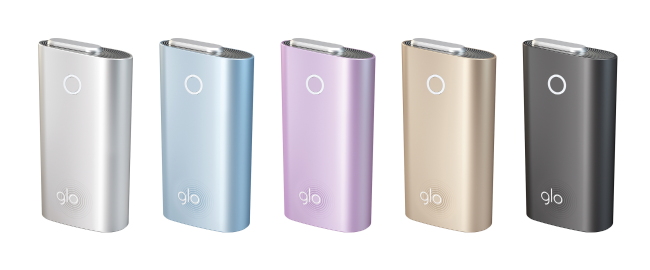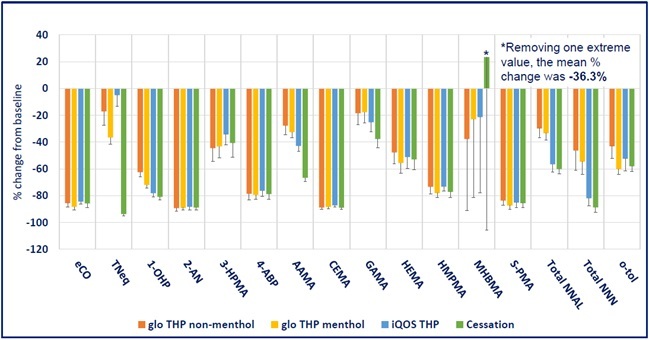HNB smokers still exposed to toxicants, but less, BAT claims
By Kim Da-solPublished : Feb. 26, 2018 - 15:39
As tension with the government persists over the risks of heat not burn tobacco, British American Tobacco’s Korean subsidiary released clinical study findings that switching from conventional cigarettes to glo -- the company’s HNB device -- reduces exposure to harmful chemicals.

While government test results have still not been released, scientists from BAT’s Reduced Risk Substantiation team found that toxicant levels in people who used glo were 90 to 95 percent less than smokers of normal cigarettes. However, the study only looked at 16 smoking-related chemicals out of some 250 identified as harmful by the World Health Organization.
Glo is a tobacco heating product designed to heat rather than burn tobacco. It does not produce smoke and some of the toxicants associated with tobacco combustion are substantially reduced, according to BAT.
Glo was launched in August 2017 to compete with its rival Iqos by Philip Morris International.
The clinical study results also showed that urine concentrations of some of the tobacco-related chemicals that the World Health Organization designated as harmful, such as 1,3-butadiene, benzene and ethylene oxide, were reduced among smokers who switched to glo.
In some cases, these reductions among tobacco-heating groups were similar to levels of toxicants measured after those who quit smoking, the company said.

The study was conducted on 180 smokers over an eight-day period in Japan, where glo demand is extremely high, the firm added. Urine, blood and breath samples were collected.
“These results are very encouraging and the next step will be to determine whether this reduction in exposure translates to a reduced biological effect, and in turn a reduction in adverse health effects for those smokers who switch completely to glo, said Dr. James Murphy, head of the Reduced Risk Substantiation team at BAT.
The results were also announced at an annual conference of the Society for Nicotine and Tobacco Research in Baltimore, the US.
A HNB e-cigarette comprises a tobacco holder and a recharger. In these devices, tobacco sticks are heated to generate a vapor that contains nicotine.
Although tobacco companies hail non-burning cigarettes as a safer option, there have been different opinions over the safety of these devices.
In July last year, the Ministry of Food and Drug Safety said it would conduct safety tests on heat-not-burn products to produce an objective analysis of the health risks posed by using such HNB devices, focusing on the levels of nicotine and tar delivered by the tobacco sticks.
But since then, the ministry has yet to release the test results, saying that a new system is needed to test the products.
“Because this is a relatively new product, we (the ministry) may have to create new regulations or systems to deal with e-cigarettes,” the ministry official was quoted as saying in an interview with a local paper.
The government said due to continued public calls to verify the risk of HNB devices, it is considering introducing a law that stipulates tobacco companies release a list of components inside the cigarette.
Currently, the government leaves tobacco makers to conduct the safety test of new cigarette products on their own if they are a state-authorized tobacco manufacturer.
Tobacco firms said the government’s idea may not be feasible.
“If we hand in a list of e-cigarette ingredients, it will be more than several pages long, because there are so many kinds of chemicals inside the product. Unlike a cigarette, it is also hard to measure the content inside the e-cigarette stick because those sticks vary in sizes and grams, depending on the device that goes with them. This is also why we weren’t able to release the components list,” an official from a tobacco firm here told The Korea Herald.
Some experts say no matter how much less tar, nicotine or toxicants is contained in HNB cigarettes, higher levels of harmful chemicals can still be found among tobacco-heating products, as how often a person smokes is more important.
Demand for HNB devices has increased significantly here with local tobacco maker KT&G joining the race with its launch of Lil in November 2017.
In January, sales of HNB cigarettes accounted for 9.1 percent or 20 million cigarette packs in the entire tobacco market.
By Kim Da-sol (ddd@heraldcorp.com)



![[Herald Interview] 'Amid aging population, Korea to invite more young professionals from overseas'](http://res.heraldm.com/phpwas/restmb_idxmake.php?idx=644&simg=/content/image/2024/04/24/20240424050844_0.jpg&u=20240424200058)














![[KH Explains] Korean shipbuilding stocks rally: Real growth or bubble?](http://res.heraldm.com/phpwas/restmb_idxmake.php?idx=652&simg=/content/image/2024/04/25/20240425050656_0.jpg&u=)

